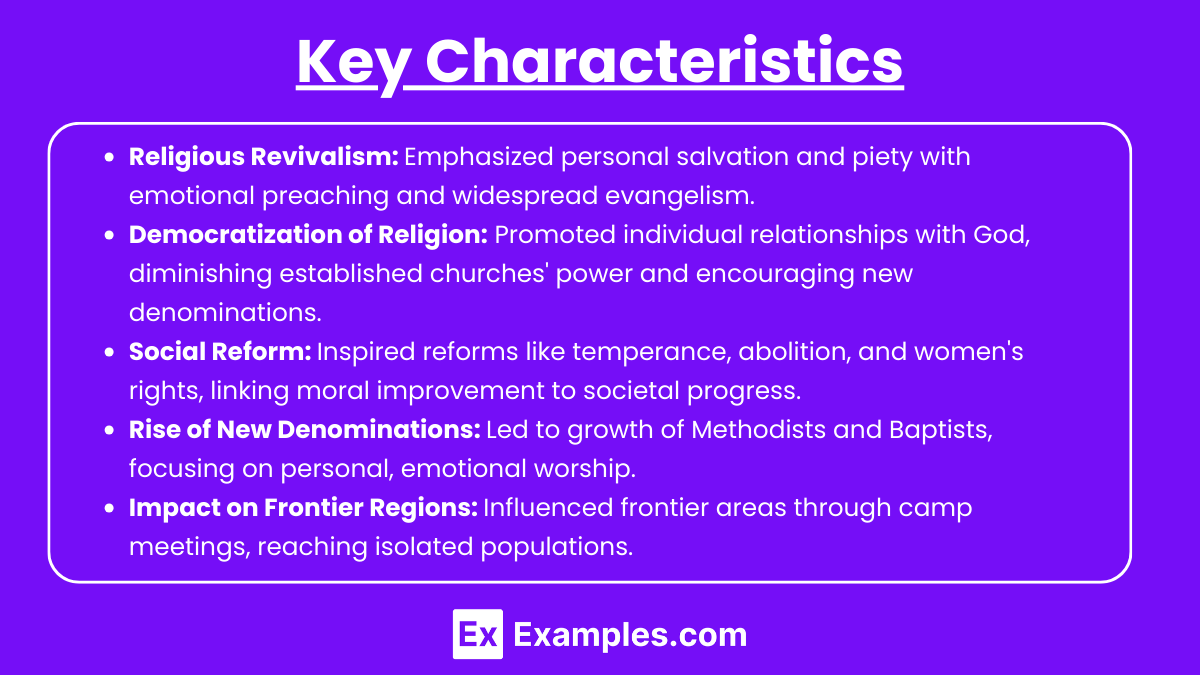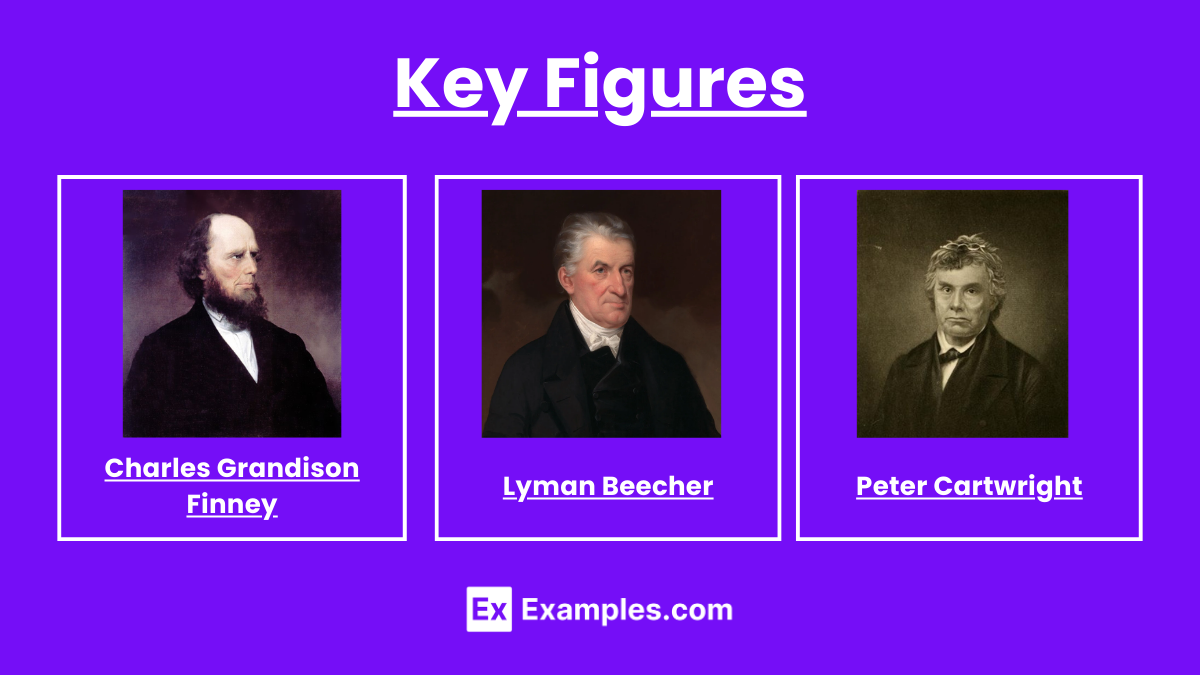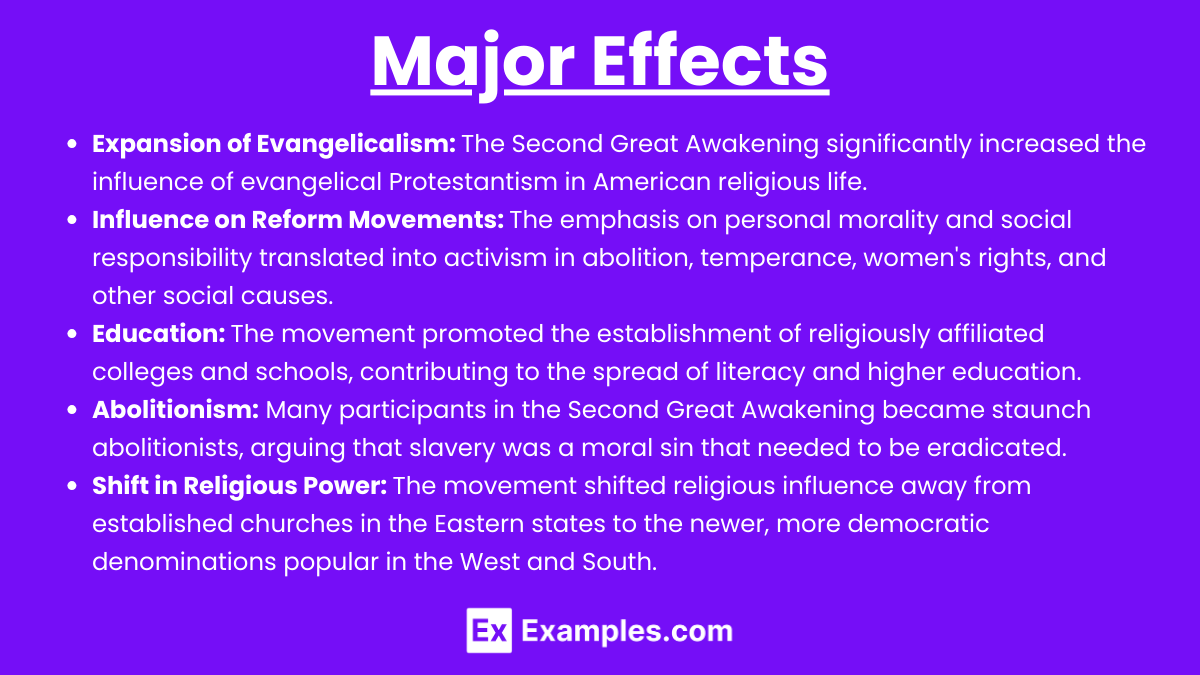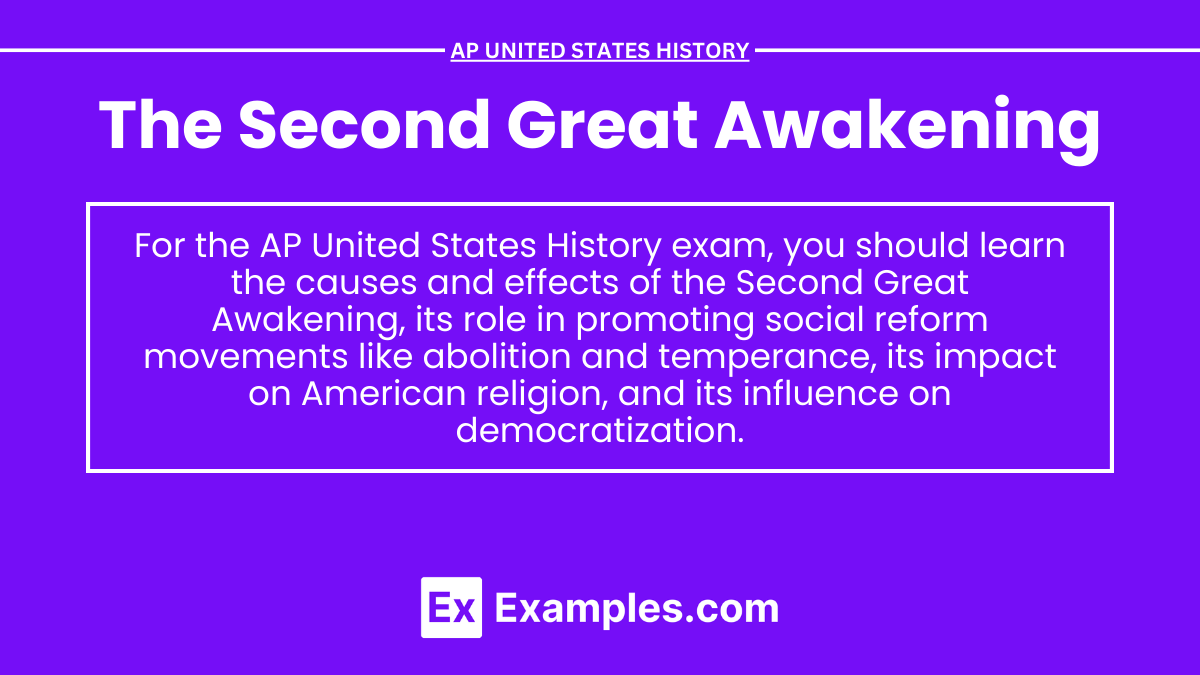In AP United States History, the Second Great Awakening refers to a pivotal religious revival that swept across the United States from the late 18th century through the early 19th century, fundamentally reshaping American society. This movement emphasized personal piety, emotional religious experiences, and individual salvation, leading to the growth of new denominations and the spread of evangelical Protestantism. The Second Great Awakening also fueled various social reform movements, including temperance, abolitionism, and women’s rights, as it inspired Americans to strive for moral and societal improvement. Its impact on religious practice and social activism marked a significant turning point in the nation’s history.
Learning Objectives
In studying the Second Great Awakening, you will be expected to understand its origins, key figures, and the religious fervor it generated across the United States. The ways in which the movement democratized religion, fostered social reforms, and influenced the rise of new denominations will be analyzed. Additionally, the impact of the Second Great Awakening on societal changes, including the abolitionist and temperance movements, will be explored. The significance of its role in shaping American culture will also be assessed.
Key Characteristics

- Religious Revivalism: The movement emphasized personal salvation and piety over traditional doctrines. It was characterized by emotional preaching, camp meetings, and widespread evangelism.
- Democratization of Religion: The Second Great Awakening fostered a more inclusive approach to religion, with an emphasis on the individual’s relationship with God. It diminished the power of established churches and encouraged the rise of new denominations.
- Social Reform: The movement inspired numerous social reforms, including temperance, abolitionism, women’s rights, and education. Religious leaders argued that moral improvement would lead to societal progress.
- Rise of New Denominations: The revival led to the growth of denominations such as Methodists and Baptists, which became dominant in many parts of the country. These groups focused on a more personal and emotional style of worship.
- Impact on Frontier Regions: The Second Great Awakening had a significant impact on frontier regions, where camp meetings became a common way to reach isolated populations.
Key Figures

- Charles Grandison Finney: A leading preacher of the Second Great Awakening, Finney was known for his fiery sermons and emphasis on personal conversion.
- Lyman Beecher: A prominent minister who advocated for temperance and other social reforms, playing a key role in the movement’s connection to societal improvement.
- Peter Cartwright: A Methodist circuit rider who spread the revivalist message across the western frontier, Cartwright’s work was instrumental in the spread of Methodism.
Major Effects

- Expansion of Evangelicalism: The Second Great Awakening significantly increased the influence of evangelical Protestantism in American religious life.
- Influence on Reform Movements: The emphasis on personal morality and social responsibility translated into activism in abolition, temperance, women’s rights, and other social causes.
- Education: The movement promoted the establishment of religiously affiliated colleges and schools, contributing to the spread of literacy and higher education.
- Abolitionism: Many participants in the Second Great Awakening became staunch abolitionists, arguing that slavery was a moral sin that needed to be eradicated.
- Shift in Religious Power: The movement shifted religious influence away from established churches in the Eastern states to the newer, more democratic denominations popular in the West and South.
Examples
- Burned-Over District: A region in upstate New York that experienced intense religious revivalism, earning its name because of the fervor of repeated revivals.
- The Temperance Movement: Inspired by the Second Great Awakening, this movement sought to curb alcohol consumption and was one of the first major social reform efforts in America.
- Abolitionist Movement: Leaders like William Lloyd Garrison were heavily influenced by revivalist ideas, using them to fuel the moral argument against slavery.
- Women’s Rights Movement: Figures like Lucretia Mott and Elizabeth Cady Stanton were influenced by the religious fervor of the period, which helped shape their advocacy for women’s rights.
- Methodist and Baptist Growth: These denominations, with their emphasis on personal conversion and lay participation, expanded rapidly, particularly in the South and West.
MCQs
- Which of the following best describes the main focus of the Second Great Awakening?
- A) Strengthening the authority of established churches
- B) Promoting social reforms and individual piety
- C) Encouraging a return to traditional religious doctrines
- D) Expanding Catholic influence in America
Explanation: The Second Great Awakening emphasized individual piety, personal salvation, and inspired various social reform movements, including temperance and abolition. - The term “Burned-Over District” refers to:
- A) Areas devastated by the Civil War
- B) Regions that experienced intense religious revivals
- C) Lands affected by frontier conflicts
- D) Southern states during Reconstruction
Explanation: The “Burned-Over District” in upstate New York was known for its intense and repeated religious revivals during the Second Great Awakening. - Which religious denominations saw significant growth during the Second Great Awakening?
- A) Methodists and Baptists
- B) Anglicans and Catholics
- C) Puritans and Quakers
- D) Lutherans and Episcopalians
Explanation: Methodists and Baptists grew rapidly during the Second Great Awakening due to their emphasis on emotional conversion and lay involvement.


